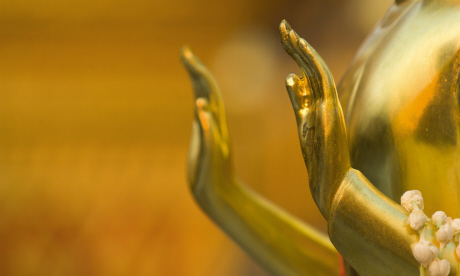
Photographing places of worship is a sensitive business. Steve Davey helps you capture the atmosphere in style, without causing offence
The single most important thing to keep in mind when you are photographing religious places is just that: they are religious places. Not causing offence is far more important than any picture you might want to take.
There are so many times when I deem it inappropriate to take pictures, only to see a holidaymaker bumbling in, disturbing people at prayer or striding through the middle of a religious service without the slightest concern.
The onus is on you to ensure that you are not disrespecting a religious place – look into what you should and shouldn’t be trying to photograph. Don’t rely on Westernised local guides. They will often pay more heed to any potential tip than to the sensibilities of rural and religious people.
Often some of the best angles for photography will put you between the people praying and what they are praying to. Be aware of what is behind you, and not just what you are pointing your camera at.
On a practical level, many religious places have dark interiors, which can be hard to photograph. Use a higher ISO sensitivity and a wide-angle lens to avoid camera shake. Sometimes it can be hard to show the entirety of a religious building, so look for details. An offering or a carving, photographed with the rest of the building or with praying pilgrims in the background, will convey atmosphere.
Be prepared to spend some time. Don’t just swoop around a building snapping away. Sit quietly and observe, and you will see things and be able to photograph them unobtrusively. You might even be ‘adopted’ by some locals, which will make it much easier to get pictures, as well as giving you a more rewarding experience.
Don’t forget your creative skills when photographing in religious places. Exploit movement or depth of field to create an intriguing image. Use focus effectively as a way of pointing something out to the person who will be looking at your picture.
When shooting the exterior of a religious place, try to include a person to give a sense of scale and a human element. In shots you can compose for the building and wait for the person to move into position.
When photographing an interior use a high ISO to avoid camera shake. Also, switch your flash off. If you can’t avoid the converging parallels that occur when you tilt your camera upwards, exaggerate this for creative effect.
Do your research: learn about the rituals you can expect to see and should try to photograph. When you are capturing them try to spend time and engage with the people first, and then be wary of intruding in their devotions.
1. If you only remember one thing… Work sensitively and discreetly. Not only will you get better pictures, but you won’t offend any locals who are praying. Be careful of standing in front of, and obstructing, any worshippers.
2. Tech tip In low light levels, increase the ISO sensitivity and take a number of shots to avoid camera shake ruining your pictures. This is less disruptive and will give more atmospheric pictures than using flash.
3. One for the kitbag In low light levels, a monopod (one-legged tripod) can help avoid camera shake and is more discreet than a full tripod.
Check out more articles by photographer Steve Davey | Contributors... More
Photographing travel icons | Advice... More
Photography tips: taking portraits | Advice... More
Ever wanted to take better travel photos? Find out how YOU can here
Should we seek permission from everyone we photograph? Have your say here